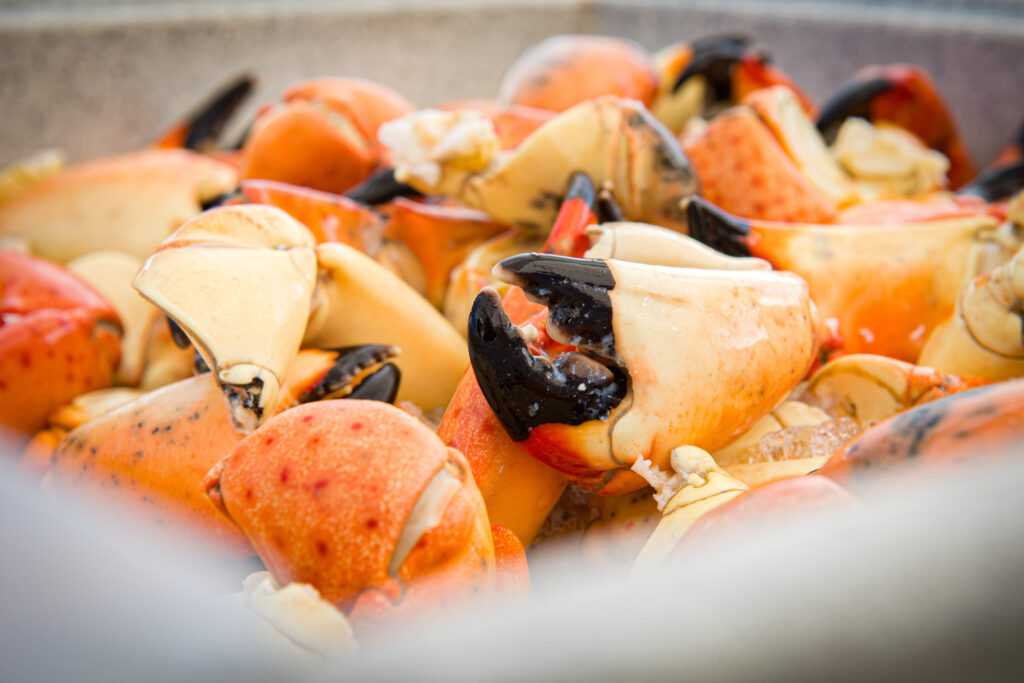In the world of seafood lovers and culinary enthusiasts, there is one season that stirs up quite the buzz. Brace yourself, for it is none other than the Stone Crab season! With tantalizing flavors and an unmatched delicacy, these delectable crustaceans have taken center stage once again. However, this year brings about an intriguing twist – new regulations have been put in place. The latest video by NBC2 News sheds light on the changes that you must know before diving into this delicious feast. Join us as we explore these Stone Crab season regulations and discover how they’ll impact both the harvesters and the avid consumers like yourself.
As the video commences, the anticipation is palpable. NBC2 News takes us on a journey through the highlights of the Stone Crab season, revealing the latest developments surrounding these succulent creatures of the sea. Get ready to be informed about the brand new regulations that seek to ensure the sustainability and future of this beloved delicacy.
Whether you’re a seasoned Stone Crab enthusiast or someone looking to embark on a gourmet culinary adventure, this video will provide you with invaluable insights that will enhance your experience throughout the entire season. Get your taste buds ready, as we prepare to unravel the secrets of the Stone Crab season with NBC2 News.
Overview of Stone Crab Season Regulations
Stone Crab season is an exciting time for both commercial and recreational fishermen in Florida. To ensure the long-term viability of this valuable resource, the Florida Fish and Wildlife Conservation Commission (FWC) has implemented a set of regulations that govern the harvesting of stone crabs.
These regulations cover various aspects such as season dates, size and sex regulations, daily bag limits, trap regulations, and recreational fishing regulations. Let’s take a closer look at each of these regulations to better understand their importance and how they contribute to the sustainability of stone crab populations.
Season Dates
Start and End Dates
The stone crab season typically begins on October 15th and ends on May 15th. During this period, both commercial and recreational fishermen are allowed to harvest stone crabs. It is important to note that the dates may vary slightly from year to year, so it’s crucial to stay updated on any changes announced by the FWC.
Closure Periods
To prevent overfishing and promote the regeneration of stone crab populations, the FWC has established closure periods during which the harvest of stone crabs is prohibited. These closure periods usually coincide with the spawning season of stone crabs, which is crucial for their reproductive success. It is essential to adhere to these closure periods to give the stone crabs the opportunity to reproduce and replenish their populations.
Size and Sex Regulations
Minimum Claw Size
One of the key regulations for harvesting stone crabs is the minimum claw size requirement. Only stone crabs with a claw size of 2.75 inches or larger from the propodus joint to the tip of the lower immovable finger are allowed to be harvested. This regulation ensures that the crabs have reached a sufficient size to reproduce before they are harvested, thus preserving the overall population.
Determining the Sex of Stone Crabs
Another important aspect of stone crab regulations is the determination of the crabs’ sex. Only male crabs can be harvested, as females play a crucial role in the reproduction and survival of the species. It is the responsibility of the fishermen to accurately determine the sex of the crabs they catch and release any females back into the water.
Daily Bag Limits
Commercial Daily Bag Limits
Commercial fishermen have specific daily bag limits that regulate the amount of stone crabs they can harvest. These bag limits vary based on the type of fishing gear used, such as traps or dip nets, and whether the crabs are harvested for claws only or whole crabs. By setting these limits, the FWC ensures that commercial fishermen do not deplete the resource and maintain a sustainable level of harvest.
Recreational Daily Bag Limits
Recreational fishermen, who often enjoy stone crabbing as a leisure activity, also have daily bag limits. The current bag limit for recreational fishermen is one gallon of claws per person or two gallons of claws per vessel, whichever is less. These bag limits help to prevent overfishing and ensure that recreational fishermen can also enjoy the activity in a responsible and sustainable manner.
Trap Regulations
Trap Specifications
Commercial stone crab fishermen use traps to catch the stone crabs, and the FWC has established specific regulations regarding trap specifications. These regulations cover various aspects such as trap size, color, escape rings, and escape mechanisms. Ensuring that the traps meet these specifications helps to minimize bycatch and ensure that only the target species, stone crabs, are caught.
Trap Placement and Retrieval Rules
To prevent damage to the seafloor and avoid potential conflicts between fishermen, the FWC has also implemented regulations regarding trap placement and retrieval. These regulations dictate where traps can be deployed, the distance between traps, and the timeframe for trap retrieval. Adhering to these rules allows for the efficient and orderly harvest of stone crabs while minimizing any negative impacts on the marine environment.

Recreational Fishing Regulations
License Requirements
To participate in recreational stone crab fishing, a valid Florida recreational saltwater fishing license is required for individuals aged 16 and older. This license can be purchased online or at any authorized retailer. It is crucial to have the appropriate license to ensure compliance with the regulations and help support conservation efforts.
Allowed Fishing Methods
Recreational stone crab fishing can be done using various methods, including handpicking, dip nets, and traps. It is important to note that traps used by recreational fishermen must meet the same specifications as those used by commercial fishermen. Regardless of the fishing method chosen, fishermen should always follow the guidelines and regulations set forth by the FWC to ensure responsible and sustainable fishing practices.
Reporting Requirements
To gather valuable data and monitor the state of the stone crab population, recreational fishermen are required to report their stone crab catch. This information includes the number of claws harvested, the number of crabs released, and the location and date of the catch. Reporting can be done online or by mail and is an essential part of the management and conservation efforts for stone crabs.
Enforcement of Stone Crab Season Regulations
Florida Fish and Wildlife Conservation Commission (FWC)
The FWC plays a vital role in the enforcement of stone crab season regulations. They have a dedicated team of officers who patrol the fishing grounds, conduct inspections, and ensure compliance with the regulations. These officers are responsible for educating fishermen about the rules and regulations, issuing citations for violations, and taking necessary enforcement actions to protect the stone crabs and their habitats.
Penalties for Violations
Violations of stone crab season regulations can result in various penalties, ranging from warnings to fines and possible criminal charges. It is crucial for fishermen to familiarize themselves with the regulations, as ignorance is not a valid defense. By adhering to the rules and regulations, fishermen can help protect the stone crab populations and avoid any legal consequences.

crack stone crab claws – Holy Crab Delivery
Importance of Stone Crab Season Regulations
Conservation of Stone Crab Populations
The regulations put in place by the FWC are essential for conserving the stone crab populations. By setting limits on the harvest, ensuring the availability of large and reproductive crabs, and implementing closure periods during the critical spawning season, these regulations help maintain the overall health and stability of the stone crab population. This conservation effort ensures that future generations can also enjoy the delight of encountering these unique and delicious creatures.
Protection of Stone Crab Habitats
The regulations surrounding trap placement and retrieval aim to minimize the impact on the seafloor and other marine life. By specifying where traps can be deployed and the timeframe for retrieval, the FWC helps protect the delicate habitats where stone crabs thrive. This protection extends to other species that coexist with stone crabs, ensuring the ecological integrity of Florida’s coastal ecosystems.
Sustainable Fishing Practices
Stone crab season regulations promote sustainable fishing practices by preventing overfishing and encouraging responsible harvesting methods. By restricting the harvest to males and ensuring the minimum claw size requirement, the FWC helps guarantee that stone crabs have the opportunity to reproduce and maintain their populations. These regulations also foster a culture of respect for the natural resources, ensuring that stone crab fishing remains sustainable for generations to come.
Conclusion
Stone crab season is a delightful time for fishermen and seafood lovers alike. However, it is crucial to remember the importance of adhering to the regulations that govern the harvesting of stone crabs. By following the season dates, size and sex regulations, daily bag limits, trap regulations, and recreational fishing regulations, fishermen can actively contribute to the conservation and sustainability of stone crab populations. Through these collective efforts, we can ensure the availability of this unique delicacy for future generations to enjoy while preserving the delicate balance of Florida’s coastal ecosystems. So, grab your traps, brushes up on the regulations, and have a wonderful stone crab season while making a positive impact on the environment.
 One Moment Please...
One Moment Please...


